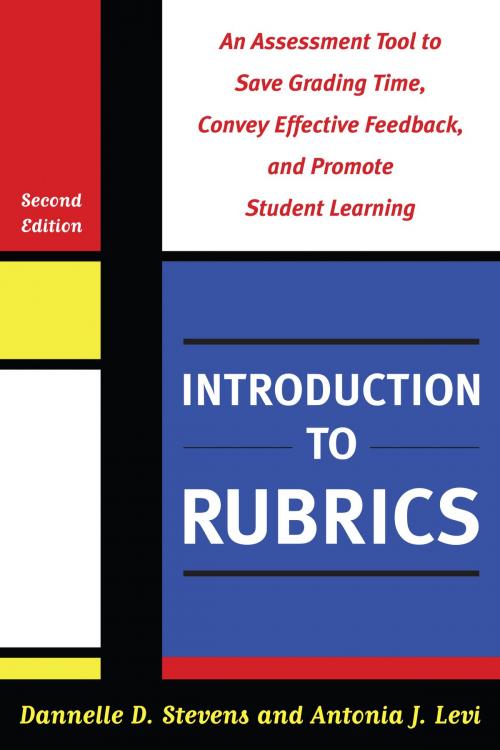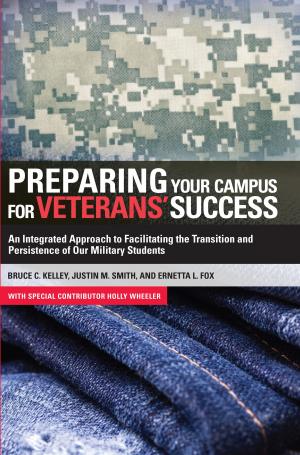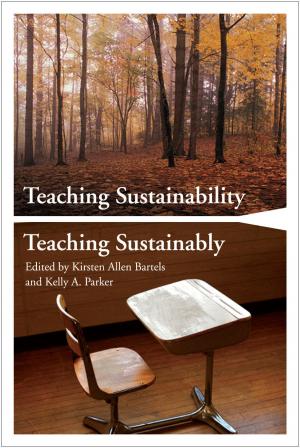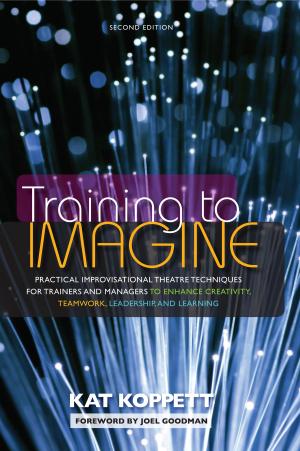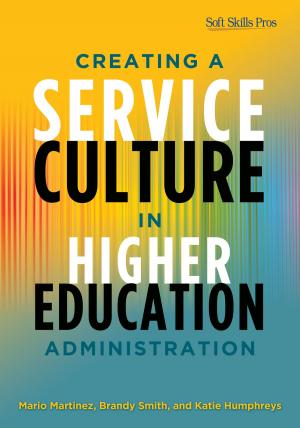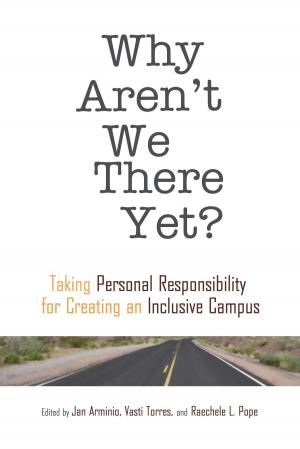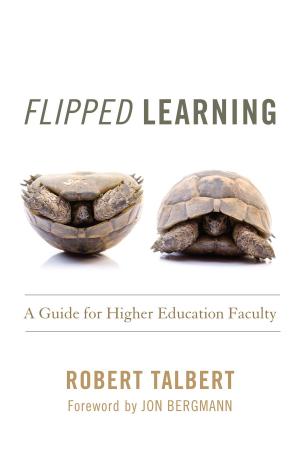Introduction to Rubrics
An Assessment Tool to Save Grading Time, Convey Effective Feedback, and Promote Student Learning
Nonfiction, Reference & Language, Education & Teaching, Higher Education| Author: | Dannelle D. Stevens, Antonia J. Levi | ISBN: | 9781579225902 |
| Publisher: | Stylus Publishing | Publication: | April 30, 2013 |
| Imprint: | Stylus Publishing | Language: | English |
| Author: | Dannelle D. Stevens, Antonia J. Levi |
| ISBN: | 9781579225902 |
| Publisher: | Stylus Publishing |
| Publication: | April 30, 2013 |
| Imprint: | Stylus Publishing |
| Language: | English |
“Anyone struggling with the new landscape of direct assessment of student learning demanded by accreditors and employers will find this new and expanded edition of Introduction to Rubrics to be exactly what they need. Based upon their extensive experience, and drawing on a wide variety of examples of rubric use by faculty across institutions and disciplines, the authors clearly and insightfully present the value of rubrics, the process of developing rubrics and using them, and their usefulness for faculty, and for improving student learning. A 'must' read for anyone seriously interested in student learning enhancement.”? Terrell Rhodes,Vice President for the Office of Quality, Curriculum and Assessment, Association of American Colleges and Universities
"A rubric, the authors emphasize, is a tool. And their book itself is a wonderful tool for exploring how to use rubrics as tools. For a long time, I have been recommending the first edition to faculty in workshops I lead. I can recommend this second edition with even greater enthusiasm, because it does so much more, and does it so intelligently.
The authors offer advice about all the surrounding situations and problems that may accompany rubrics: how to get students involved in rubrics, how to use rubrics with TAs, how to collaborate with other faculty in constructing common rubrics, and how to use rubrics that someone else has constructed. The book focuses on rubrics but offers a great deal of advice about good teaching, good collaboration, and good assessment. In short, this book is a great tool."? From the Foreword by Barbara E. Walvoord,Professor Emerita, University of Notre Dame, and author of Effective Grading
This new edition retains the appeal, clarity and practicality that made the first so successful, and continues to provide a fundamental introduction to the principles and purposes of rubrics, with guidance on how to construct them, use them to align course content to learning outcomes, and apply them in a wide variety of courses, and to all forms of assignment.
Reflecting developments since publication of the first edition, the authors have extended coverage to include:
• Expanded discussion on use of rubrics for grading
• Grading on-line with rubrics
• Wider coverage of rubric types (e.g., holistic, rating scales)
• Rubric construction in student affairs
• Pros and cons of working with "ready-made" rubrics
• Using rubrics to improve your teaching, and for SoTL
• Use of rubrics in program assessment (case study)
• Application of rubrics in the arts, for study abroad, service learning and students’ independent learning
• Up-dated literature review
"A rubric, the authors emphasize, is a tool. And their book itself is a wonderful tool for exploring how to use rubrics as tools. For a long time, I have been recommending the first edition to faculty in workshops I lead. I can recommend this second edition with even greater enthusiasm, because it does so much more, and does it so intelligently.
The authors offer advice about all the surrounding situations and problems that may accompany rubrics: how to get students involved in rubrics, how to use rubrics with TAs, how to collaborate with other faculty in constructing common rubrics, and how to use rubrics that someone else has constructed. The book focuses on rubrics but offers a great deal of advice about good teaching, good collaboration, and good assessment. In short, this book is a great tool."? From the Foreword by Barbara E. Walvoord,Professor Emerita, University of Notre Dame, and author of Effective Grading
This new edition retains the appeal, clarity and practicality that made the first so successful, and continues to provide a fundamental introduction to the principles and purposes of rubrics, with guidance on how to construct them, use them to align course content to learning outcomes, and apply them in a wide variety of courses, and to all forms of assignment.
Reflecting developments since publication of the first edition, the authors have extended coverage to include:
• Expanded discussion on use of rubrics for grading
• Grading on-line with rubrics
• Wider coverage of rubric types (e.g., holistic, rating scales)
• Rubric construction in student affairs
• Pros and cons of working with "ready-made" rubrics
• Using rubrics to improve your teaching, and for SoTL
• Use of rubrics in program assessment (case study)
• Application of rubrics in the arts, for study abroad, service learning and students’ independent learning
• Up-dated literature review
“Anyone struggling with the new landscape of direct assessment of student learning demanded by accreditors and employers will find this new and expanded edition of Introduction to Rubrics to be exactly what they need. Based upon their extensive experience, and drawing on a wide variety of examples of rubric use by faculty across institutions and disciplines, the authors clearly and insightfully present the value of rubrics, the process of developing rubrics and using them, and their usefulness for faculty, and for improving student learning. A 'must' read for anyone seriously interested in student learning enhancement.”? Terrell Rhodes,Vice President for the Office of Quality, Curriculum and Assessment, Association of American Colleges and Universities
"A rubric, the authors emphasize, is a tool. And their book itself is a wonderful tool for exploring how to use rubrics as tools. For a long time, I have been recommending the first edition to faculty in workshops I lead. I can recommend this second edition with even greater enthusiasm, because it does so much more, and does it so intelligently.
The authors offer advice about all the surrounding situations and problems that may accompany rubrics: how to get students involved in rubrics, how to use rubrics with TAs, how to collaborate with other faculty in constructing common rubrics, and how to use rubrics that someone else has constructed. The book focuses on rubrics but offers a great deal of advice about good teaching, good collaboration, and good assessment. In short, this book is a great tool."? From the Foreword by Barbara E. Walvoord,Professor Emerita, University of Notre Dame, and author of Effective Grading
This new edition retains the appeal, clarity and practicality that made the first so successful, and continues to provide a fundamental introduction to the principles and purposes of rubrics, with guidance on how to construct them, use them to align course content to learning outcomes, and apply them in a wide variety of courses, and to all forms of assignment.
Reflecting developments since publication of the first edition, the authors have extended coverage to include:
• Expanded discussion on use of rubrics for grading
• Grading on-line with rubrics
• Wider coverage of rubric types (e.g., holistic, rating scales)
• Rubric construction in student affairs
• Pros and cons of working with "ready-made" rubrics
• Using rubrics to improve your teaching, and for SoTL
• Use of rubrics in program assessment (case study)
• Application of rubrics in the arts, for study abroad, service learning and students’ independent learning
• Up-dated literature review
"A rubric, the authors emphasize, is a tool. And their book itself is a wonderful tool for exploring how to use rubrics as tools. For a long time, I have been recommending the first edition to faculty in workshops I lead. I can recommend this second edition with even greater enthusiasm, because it does so much more, and does it so intelligently.
The authors offer advice about all the surrounding situations and problems that may accompany rubrics: how to get students involved in rubrics, how to use rubrics with TAs, how to collaborate with other faculty in constructing common rubrics, and how to use rubrics that someone else has constructed. The book focuses on rubrics but offers a great deal of advice about good teaching, good collaboration, and good assessment. In short, this book is a great tool."? From the Foreword by Barbara E. Walvoord,Professor Emerita, University of Notre Dame, and author of Effective Grading
This new edition retains the appeal, clarity and practicality that made the first so successful, and continues to provide a fundamental introduction to the principles and purposes of rubrics, with guidance on how to construct them, use them to align course content to learning outcomes, and apply them in a wide variety of courses, and to all forms of assignment.
Reflecting developments since publication of the first edition, the authors have extended coverage to include:
• Expanded discussion on use of rubrics for grading
• Grading on-line with rubrics
• Wider coverage of rubric types (e.g., holistic, rating scales)
• Rubric construction in student affairs
• Pros and cons of working with "ready-made" rubrics
• Using rubrics to improve your teaching, and for SoTL
• Use of rubrics in program assessment (case study)
• Application of rubrics in the arts, for study abroad, service learning and students’ independent learning
• Up-dated literature review
